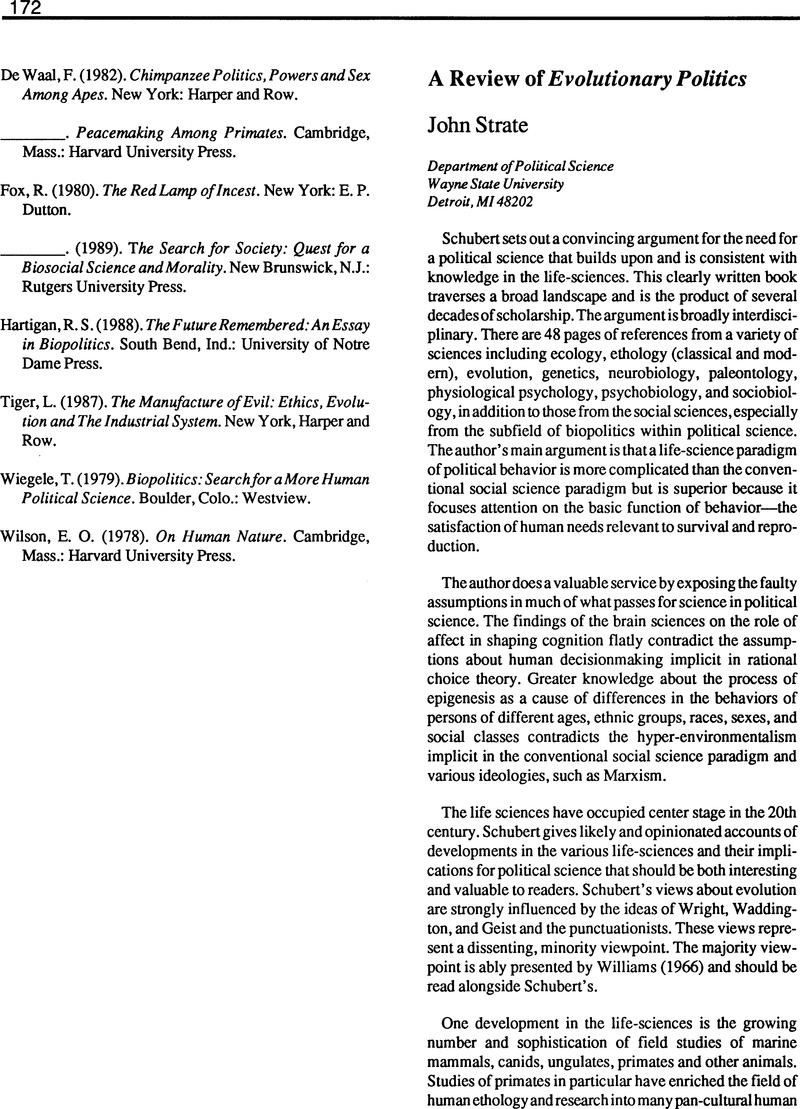No CrossRef data available.
Article contents
A Review of Evolutionary Politics
Published online by Cambridge University Press: 17 May 2016
Abstract
An abstract is not available for this content so a preview has been provided. Please use the Get access link above for information on how to access this content.

- Type
- Book Reviews
- Information
- Politics and the Life Sciences , Volume 9 , Issue 1: Special Issue: Biotechnology and International Conflict , August 1990 , pp. 172 - 174
- Copyright
- Copyright © Association for Politics and the Life Sciences
References
Corning, P. A. (1983). The Synergism Hypothesis: A Theory of Progressive Evolution. New York: McGraw Hill.Google Scholar
Eldredge, N. and Gould, S. J. (1972). “Punctuated Equilibria: An Alternative to Phyletic Gradualism.” In Schopf, T. J. M. (ed), Models in Paleobiology. San Francisco: Freeman and Cooper, pp. 82–115.Google Scholar
Hamilton, W. J. (1964). “The Genetical Evolution of Social Behavior: I and II.” Journal of Theoretical Biology 7:1–52.Google Scholar
Gans, C. (1987). “Punctuated Equilibria and Political Science: A Neontological View.” Politics and the Life Sciences 5: 220–227.Google Scholar
van den Berghe, P. L. (1979). Human Family Systems. An Evolutionary View. New York: Elsevier.Google Scholar
Williams, G. C. (1957). “Pleiotropy, Natural Selection, and the Evolution of Senescence.” Evolution 11: 398–411.CrossRefGoogle Scholar
Williams, G. C. (1966). Adaptation and Natural Selection. A Critique of Some Current Evolutionary Thought. Princeton, NJ: Princeton University Press.Google Scholar


